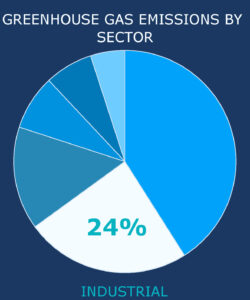
In 2021, 99.6% of all global hydrogen was produced from fossil fuels, creating 900 megatons of greenhouse gas emissions. Hydrogen is used for many applications, with oil refineries, chemical producers, and semiconductor manufacturing serving as the largest offtakers. Replacing fossil-based hydrogen with zero-emission electrolytic hydrogen will have positive climate impacts and make California more energy resilient.